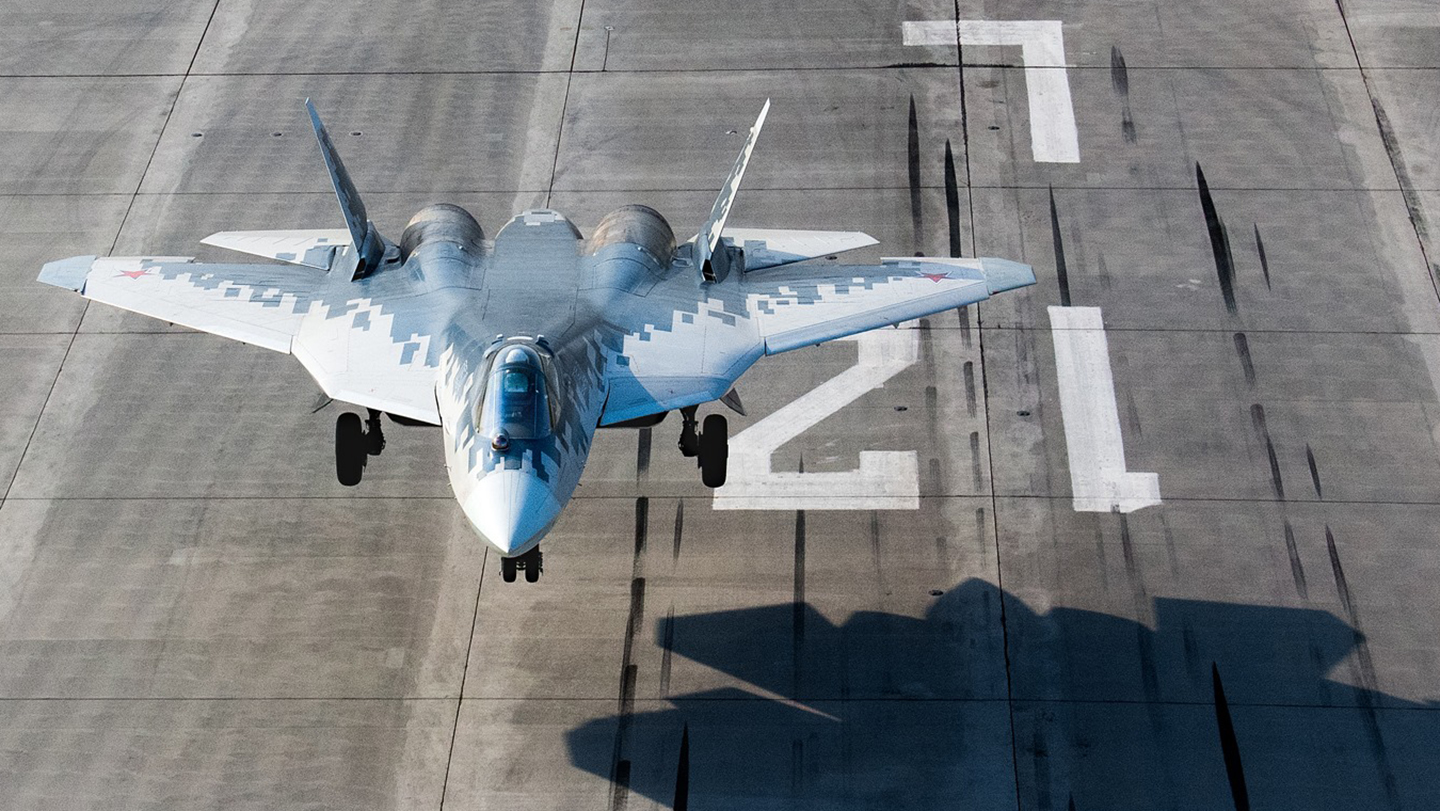After many delays and more than one mishap, Russia’s new-generation Su-57 Felon fighter jet is finally headed toward frontline service. The first operational — as opposed to test and evaluation unit — within the Russian Aerospace Forces (VKS, to give its Russian acronym) to receive the new fighters will be the 23rd Fighter Aviation Regiment (Istrebitelnyi Aviatsionnyi Polk, IAP) based at Dzyomgi near Komsomolsk-on-Amur in Russia’s Far East. But it will likely be a good while until these advanced aircraft are able to take on regular combat missions with their new operators.
The regiment’s deputy commander, Lt. Col. Ilya Sizov, told the Eastern Military District newspaper Suvorovsky Natisk in November that the unit’s pilots are currently undergoing theoretical training on the Su-57 at the crew conversion center in Lipetsk. The 4th State Air Personnel Preparation and Military Evaluation Center at Lipetsk is tasked with conducting the military evaluation of initial batches of tactical combat aircraft, training pilots in the combat application of the aircraft, and developing air force tactics.
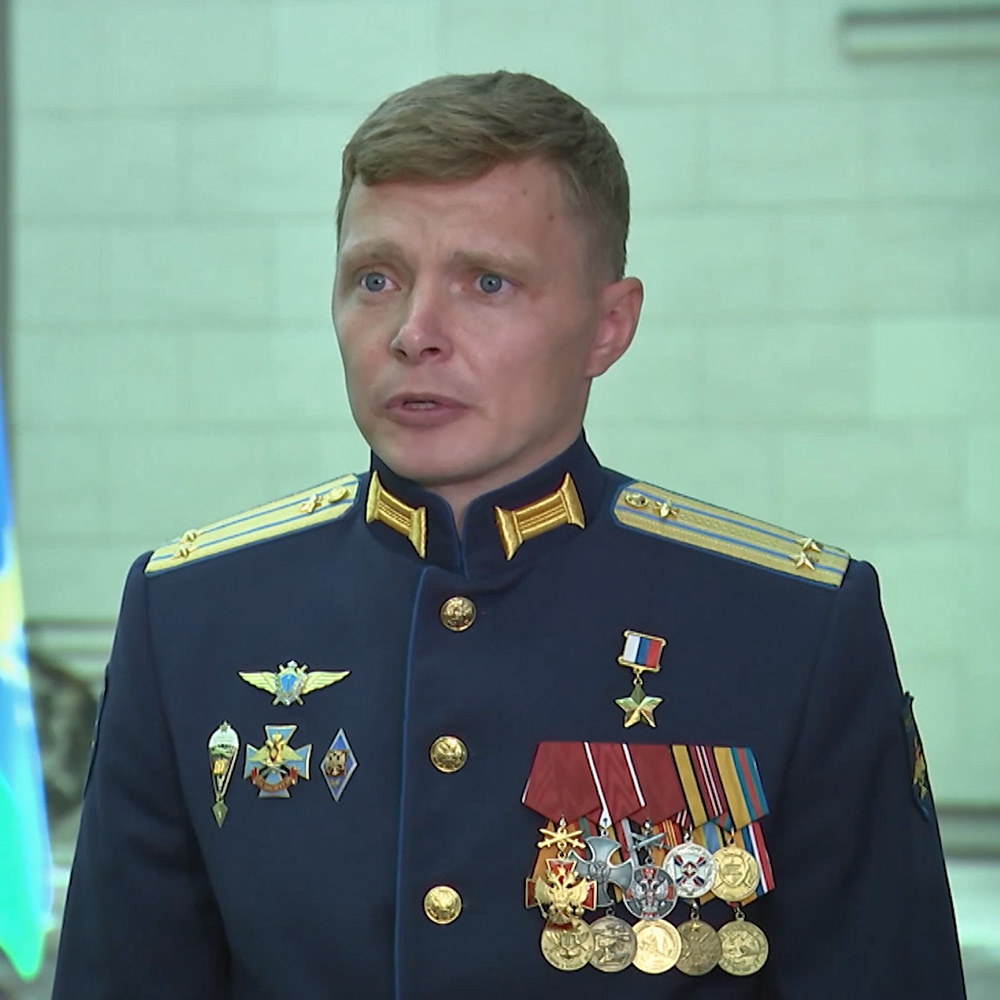
Lt. Col. Sizov mentioned the theoretical (as opposed to practical) training of pilots from Dzyomgi in Lipetsk when talking to Suvorovsky Natisk. This suggests it will still be a long time before the first group of 23 IAP pilots has actually fully mastered the Felon.

The airfield at Dzyomgi is jointly used by the 23 IAP and the Sukhoi Komsomolsk-on-Amur Aviation Plant, or KnAAZ. In the past, this facility produced Su-27 fighters and currently makes Su-35 and Su-57 aircraft. Having the manufacturing plant collocated is ideal for supporting the operations of new aircraft types, with specialists from the production plant on hand to assist. For this reason, it was the regiment in Dzyomgi that was the first to receive Su-27 fighters in 1985, followed by the Su-35S in 2014, and now the Su-57 — planned for 2023.
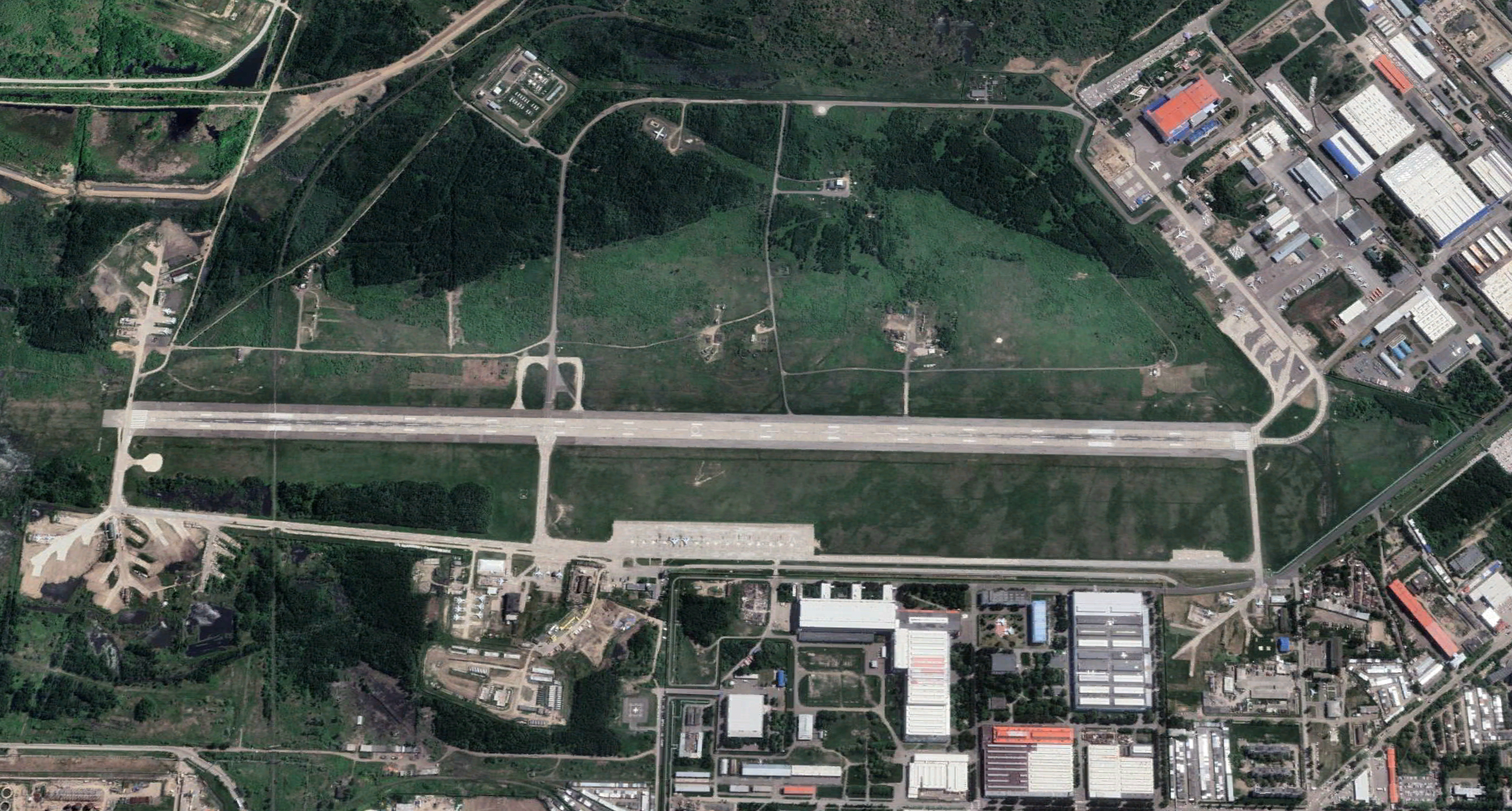
How many Su-57s are there?
After 10 test examples of the Su-57 (previously known as the T-50) fighter produced between 2010 and 2017, on August 22, 2018, Sukhoi was awarded a contract for two more refined pre-production fighters to be delivered to the VKS, one in 2019 and one in 2020. The first of these crashed during a handover flight on December 24, 2019, due to a flight control system’s failure — an incident that we covered at the time. One year later, in December 2020, the second aircraft, tail number ‘01,’ became the first Su-57 to be formally handed over to the Russian military and was deployed to the Russian Ministry of Defense’s 929th State Flight Test Center in Akhtubinsk.
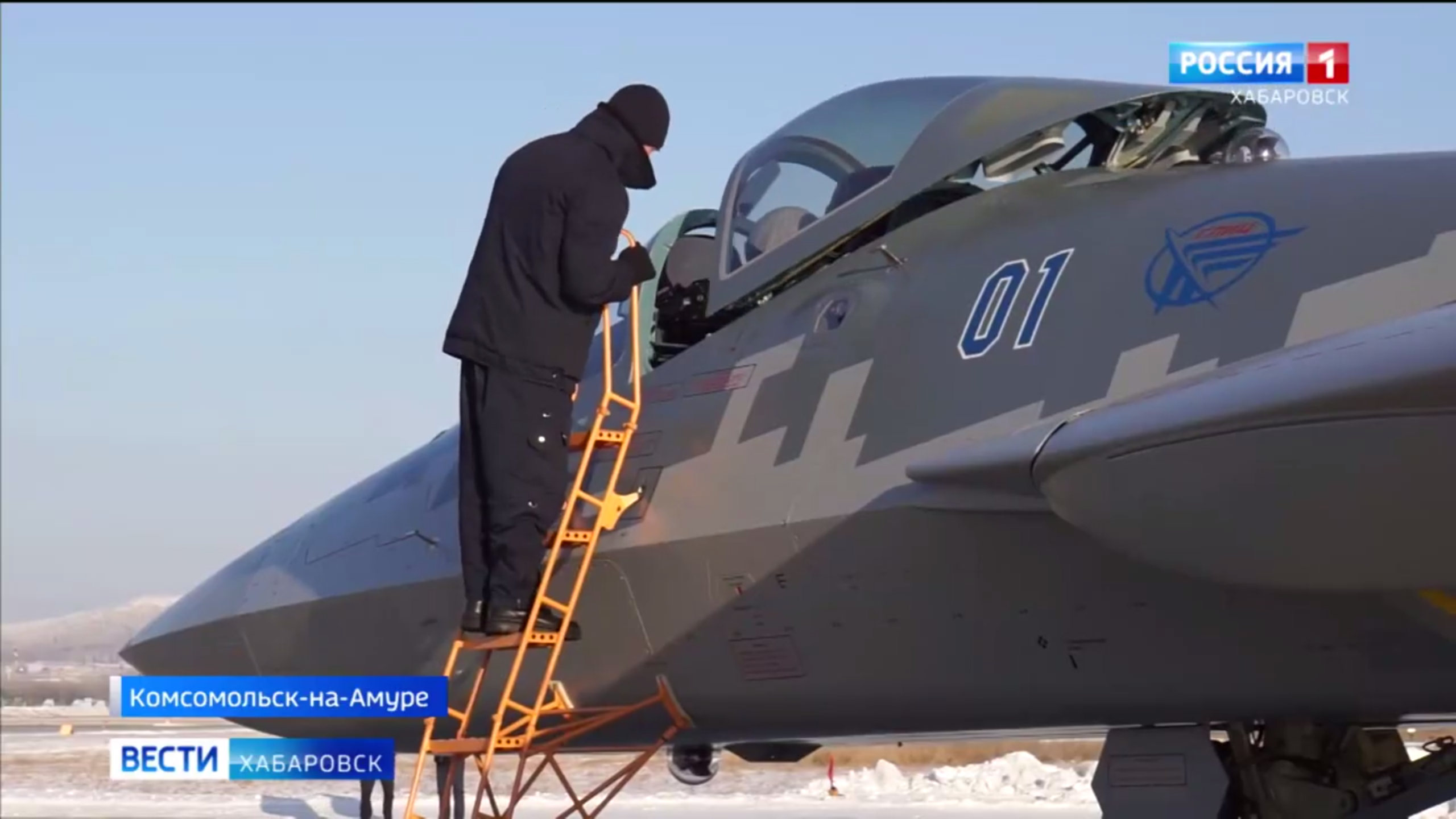
A big order for the Su-57 arrived on June 27, 2019, when the defense ministry placed a contract for 76 fighters with deliveries planned between 2021 and 2027. The schedule provided for the production of four aircraft in each 2021 and 2022, then seven aircraft each in 2023 and 2024, and then 18 aircraft each in 2025, 2026, and 2027. The first four fighters were to be handed over to the Lipetsk crew conversion center, while the remaining ones were to complete three operational regiments of 24 aircraft each.
In keeping with much of the Su-57 program, the implementation of these plans was also delayed. The first two aircraft from the 2021 production run (‘02’ and ‘52’) were delivered in February of that year, and the remaining two (‘53’ and ‘54’) were delivered in May 2022. This means the military currently has five aircraft: ‘01’ and ‘02’ are in Akhtubinsk, and ‘52,’ ’53,’ and ‘54’ are in Lipetsk. The four aircraft planned for 2022 and intended for the regiment in Dzyomgi will probably be ready at the beginning of 2023.
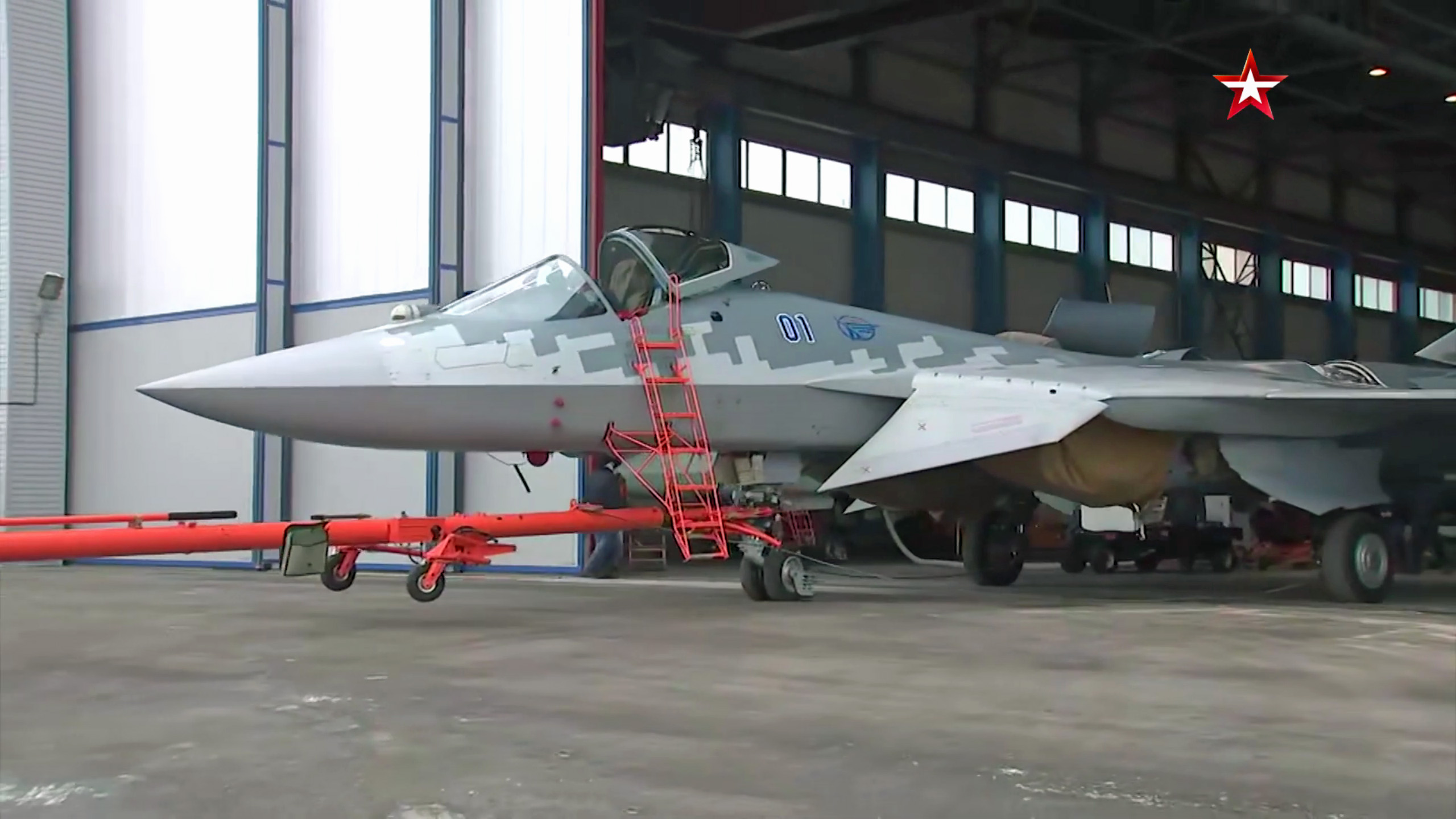
Alongside series production, the aircraft is being improved. On October 21, 2022, Su-57 ‘511’ (T-50-11) began flight testing after modernization (in its original form it had first flown on August 6, 2017). According to the official announcement, “a set of onboard equipment with extended functionality, intellectual crew support and the possibility of using a wide range of new types of weapons was being tested. It is also possible to install the second-stage engines on the aircraft.” Overall, the scope of modernization doesn’t sound very ambitious. In particular, it indicates that the new izdeliye 30 engines for the proposed fully modernized Su-57M are not even ready to start trials yet, let alone to be installed in production aircraft.

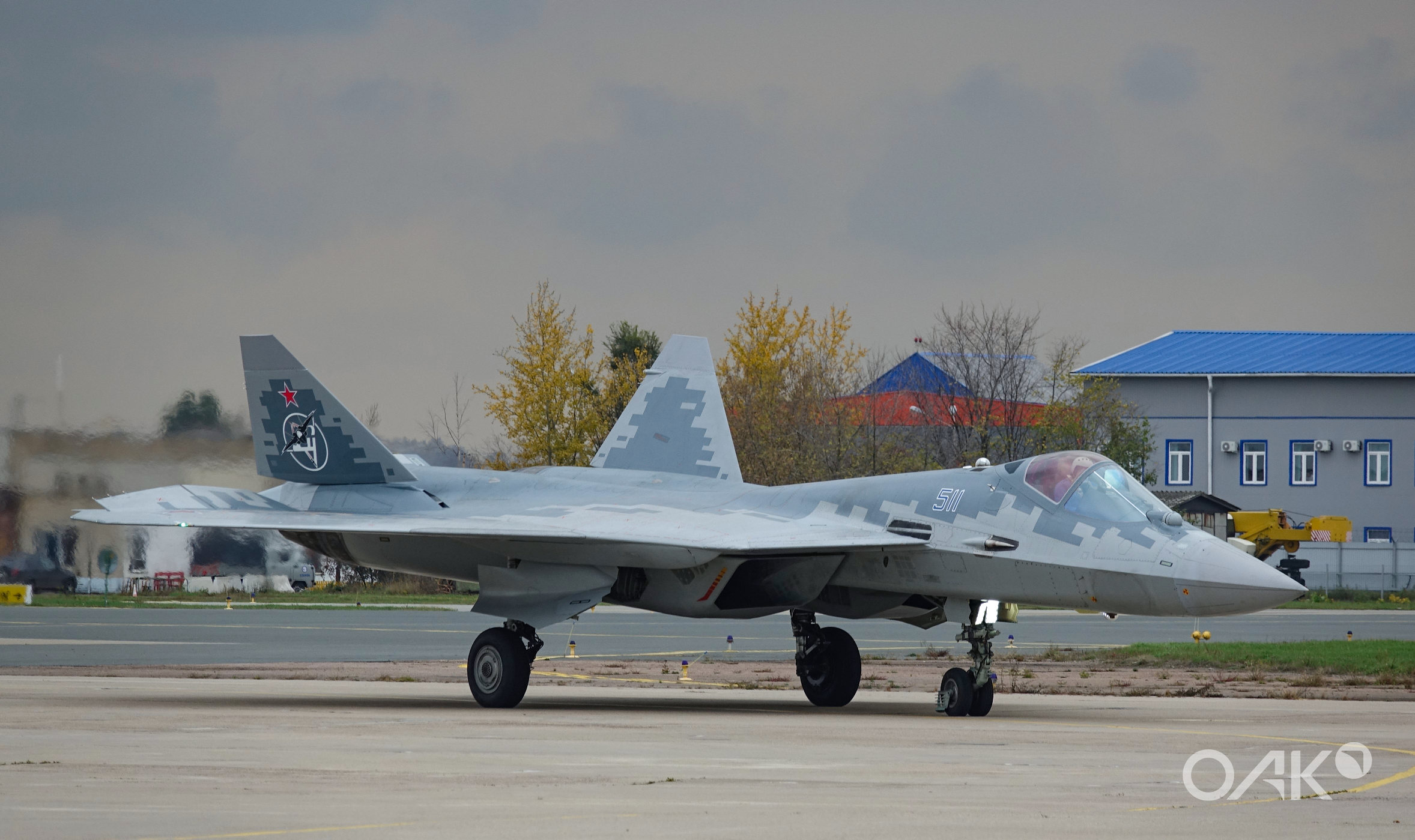
Russian state media has reported on several occasions about the use of the Su-57 in the war with Ukraine, a possibility that we have also addressed in the past. In October, Gen. Sergey Surovikin, commander in overall charge of the Russian invasion, said that the Su-57, “having a wide range of weapons, in each sortie solves multifaceted tasks of destroying air and ground targets.” It seems almost certain the Su-57 did not fly over Ukraine — there is no reason for Russia to take such a risk. If the Felon has been used, the aircraft would have fired its long-range missiles from deep within Russia.
Overall, it’s hard to predict what will happen with Su-57 production and further development. Since the invasion of Ukraine on February 24, 2022, Russia finds itself in a completely new political and economic situation. However, further delays will surely affect the fighter. Meanwhile, the chances of the Su-57E export version finding success appear to have been further diminished. This aircraft has been offered unsuccessfully since 2018.
A historic fighter unit
The fighter regiment in Dzyomgi (the name means ‘birch grove’ in the local Nanai language) was formed back in August 1939 as the 60 IAP. First, it flew I-16, then Yak-9 (from 1945), MiG-15 (1951), MiG-17 and Yak-25 (1955–56), Su-15 (1969), and, beginning in 1985, Su-27 fighters. In 2000, the personnel and Su-27 aircraft from the 404 IAP in Orlovka, which had been dissolved a few months earlier, were incorporated into the 60th regiment in Dzyomgi; at the same time, the unit’s designation was changed to 23 IAP.
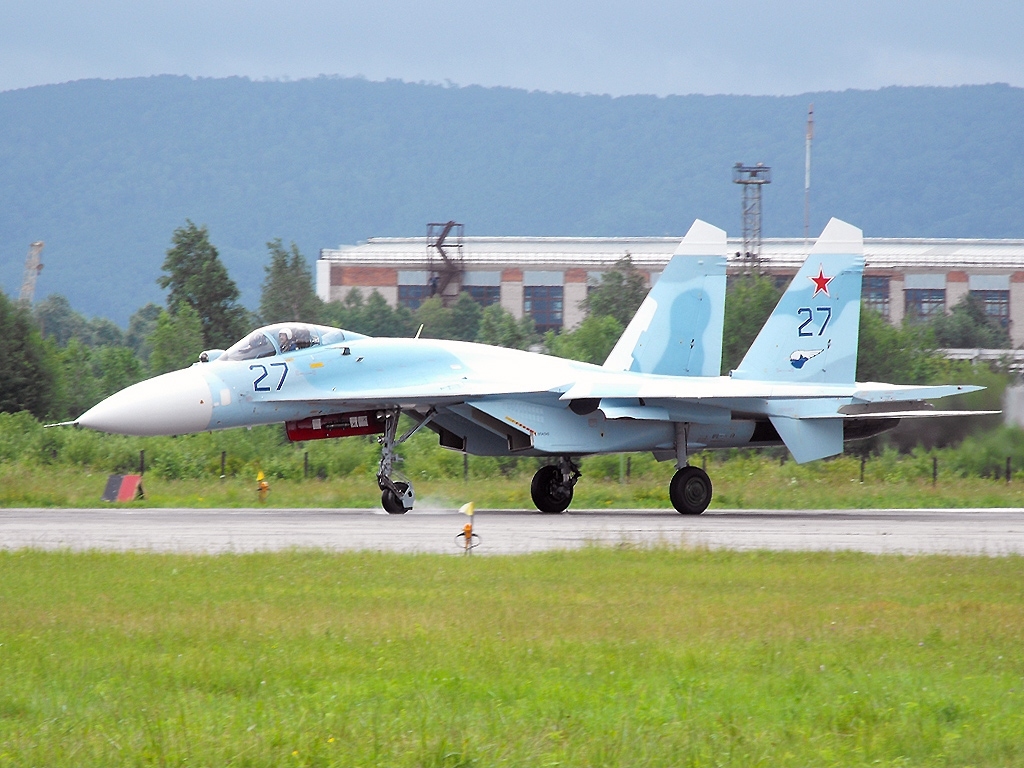
Currently, the 23 IAP has two squadrons (a fighter squadron in Russia comprises 12 aircraft) of Su-35S single-seat fighters plus a small number of Su-30SM two-seaters for training. In addition to the main base in Dzyomgi, the 23rd regiment also maintains a detachment (usually three Su-35S fighters) at Yasnyi airfield on the island of Iturup (Etorofu) in the strategically important Kuril Islands archipelago.
The 23 IAP in the war with Ukraine
For the 23 IAP, involvement in the campaign against Ukraine began a month before the invasion. In the last days of January 2022, 12 Russian Su-35S and several Su-30SM fighters arrived at the airbase in Baranavichy in Belarus. The Su-35S fighters came from the 22 IAP in Tsentralnaya Uglovaya and the 23 IAP in Dzyomgi, while the Su-30SM fighters were from the 120th Independent Fighter Aviation Regiment in Domna; all three units belong to the 11th Army of Air Force and Air Defense assigned to the Far East of Russia.
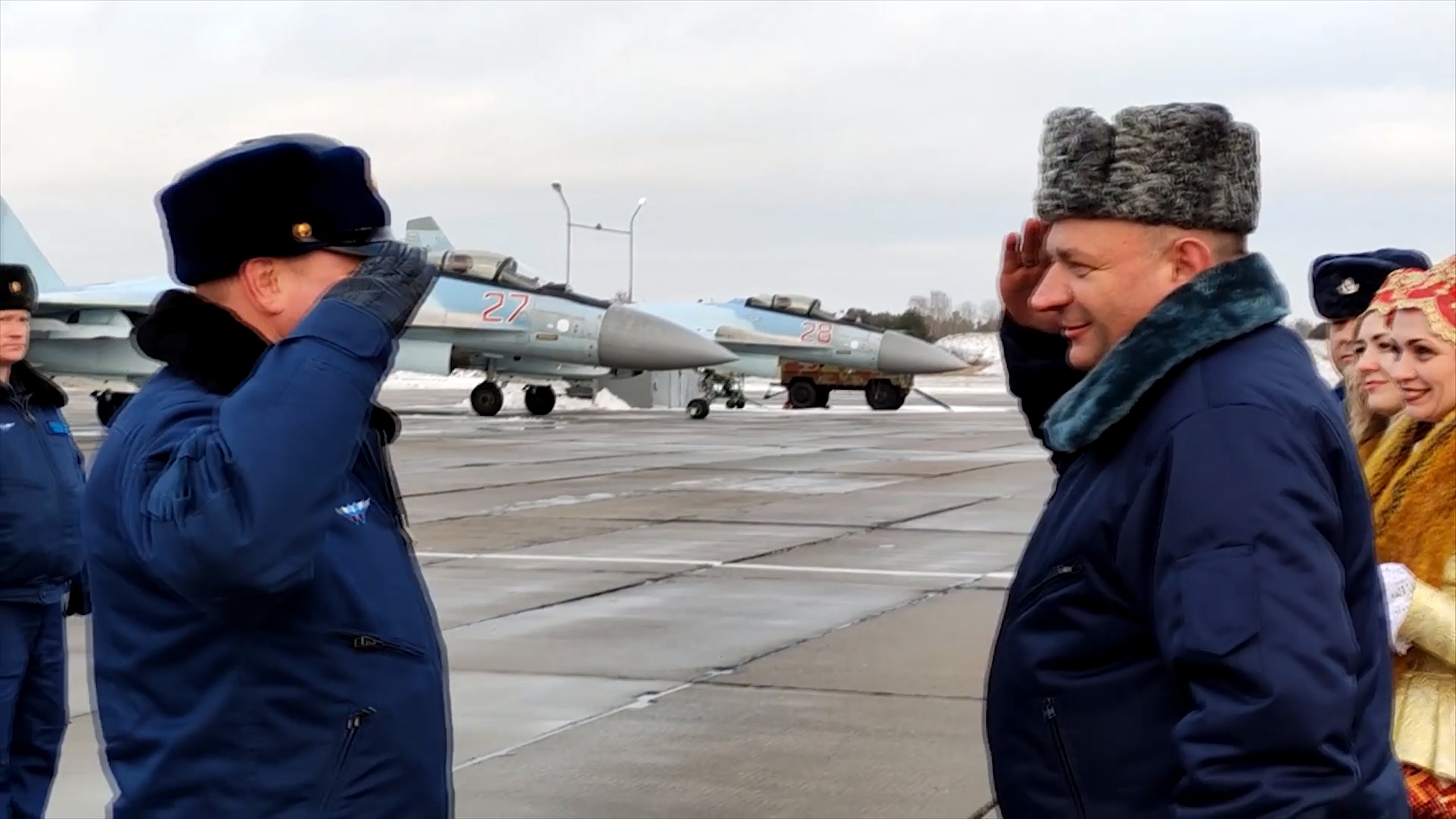
The fighter jets arrived in Belarus under the pretext of participating in the joint Russian-Belarusian military exercises known as Allied Determination 2022 (Soyuznaja Reshimost), which ran from February 10-20. Once in Belarus, the Flankers were organized into a mixed aviation group, the commander of which was the commander of the 23 IAP, Col. Alexander Lobyntsev.
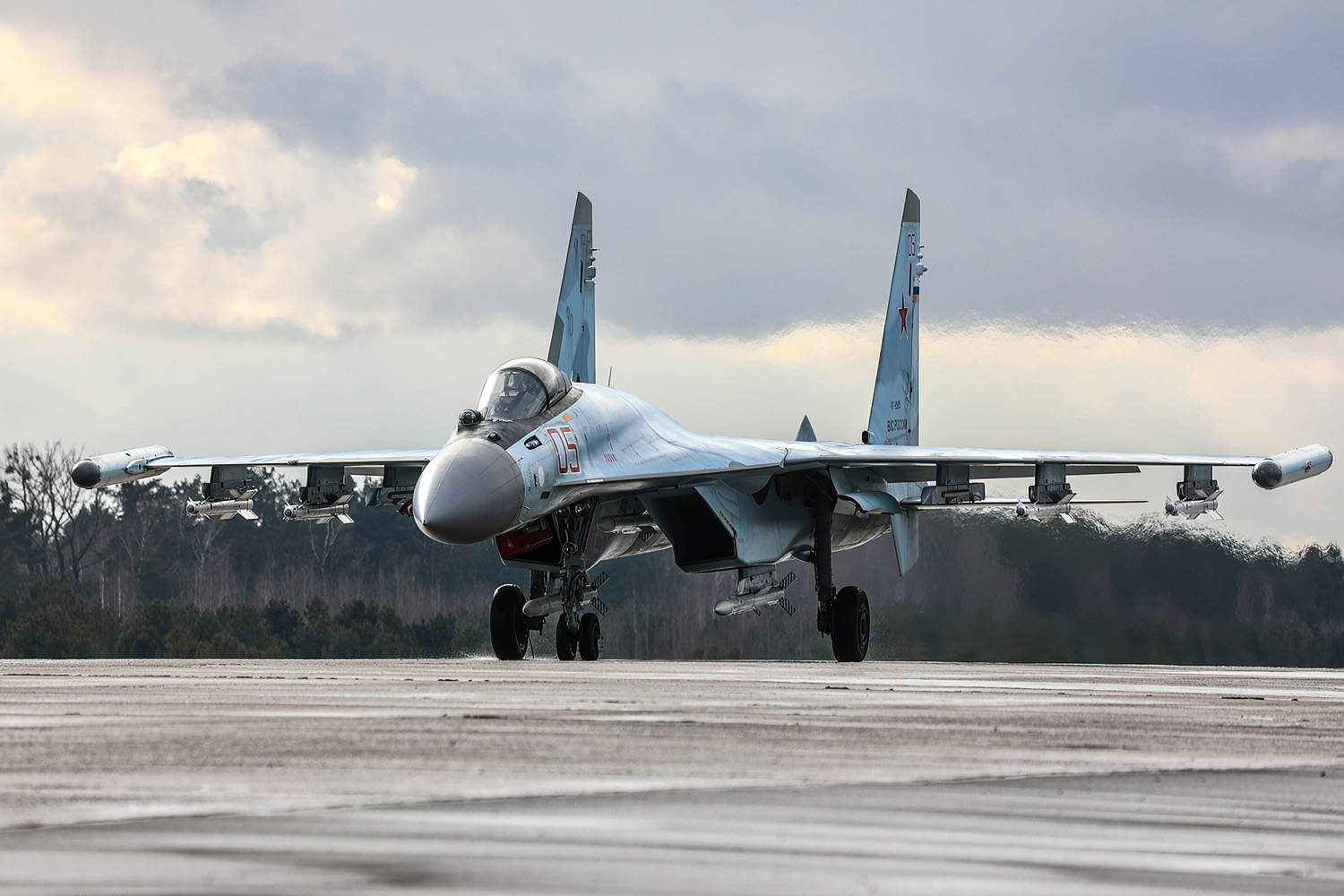
After the exercises, the aircraft remained in Belarus, and they participated in the invasion from the first day. In the spring, after the withdrawal of Russian troops from the Kyiv region, after the operation there ended in failure, a group of Su-35S and Su-30SM fighters from Baranavichy moved to Voronezh, Russia, and to the airfield of the 47th Bomber Aviation Regiment that flies Su-34 Fullback strike aircraft. Stationed here, they were now close to the eastern border of Ukraine.
Su-35S fighters very rarely fly over territory controlled by the Ukrainian Armed Forces. For example, when operating from Baranavichy, Russian fighters fired their missiles against Ukrainian aircraft that were indicated to them by A-50 Mainstay airborne early warning aircraft, remaining over the territory of Belarus the whole time.
The same situation now continues in the east. Above all, the Su-35S uses the superior capabilities of its R-77-1 (AA-12 Adder) and especially the 124-mile-range R-37M (AA-13 Axehead) air-to-air missiles, compared to the R-27 (AA-10 Alamo) missiles used by the Ukrainian fighters. You can read more about the R-37M missile in our previous report on the MiG-31BM Foxhound’s war in Ukraine.
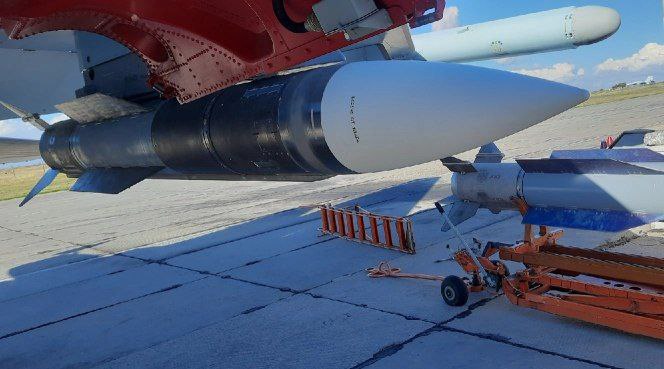
This may explain the low attrition of Su-35S fighters compared to the high losses of Russian Su-25 Frogfoot attack aircraft and Su-34s, which more often operate in a very challenging air-defense environment. Only one Su-35S loss over Ukraine has been documented. This was an aircraft from the 159 IAP in Besovets shot down near Izyum on April 3, 2022.
On November 1, Zvezda TV (a channel affiliated with the Russian Ministry of Defense) showed a video in which a pilot explained that he shot down a Ukrainian military aircraft with a long-range missile, without specifying the type of weapon. In the background was a Su-35S fighter armed with two R-37M missiles in tandem between the engines, two R-77-1s under the air intakes, two short-range R-73s (AA-11 Archer) under the wing, and one Kh-31PM (AS-17 Krypton) anti-radiation missile under the wing.
The Kh-31P/PM anti-radiation missile, used for self-defense, is a common weapon on Su-35S fighters in Ukraine. Usually, in addition to the standard set of air-to-air missiles, the Su-35S carries one Kh-31P or PM, in case of a ground-based anti-aircraft threat. The pilot activates the missile’s passive radar seeker before entering the danger zone. The Kh-31P/PM missile is then launched automatically when its seeker detects the working fire-control radar of the enemy’s ground-based air defense system. In a video published by the Russian Ministry of Defense, a pilot talking about the use of the Kh-31 says that “the missile detects the radiation of the enemy’s air defense systems, then recognizes and acquires the target, after which it launches.” The pilot continues: “The missile acquires the signal quickly [and] calculates the distance. It takes seconds from acquisition to launch.”
Occasionally we have seen Su-35S fighters using large glide bombs against targets in Ukraine. In a video from Voronezh Air Base, one of the Su-35S aircraft is seen carrying two heavy 3,300-pound UPAB-1500B bombs, while another one was armed with four smaller 1,000-pound KAB-500M bombs. The UPAB-1500B bomb, thanks to its pop-out wings, has a range of up to 31 miles, and the KAB-500M bomb can hit targets at up to 25 miles. Both bombs are guided by inertial navigation with satellite correction; in the current versions, there is no terminal homing. The KAB-500M and UPAB-1500B bombs have been in production since around 2019.
For its participation in the invasion of Ukraine, the 23 IAP recently received Russia’s highest distinction for a military unit. On November 17, President Vladimir Putin awarded the regiment the title of Guards. Two pilots of the regiment, Maj. Viktor Dudin and Lt. Col. Ilya Sizov meanwhile received the highest individual distinction in Russia, the title of Hero of the Russian Federation.
While there is every sign that the 23 IAP will continue to play a leading role in the Ukrainian air war, with aircraft and crews rotated into the combat theater as long as there is a demand for them there, it remains much harder to predict when the same unit will finally bring its Su-57s into full operational service.
With the first group of pilots apparently yet to actually begin flying the new-generation fighters, it seems it will be some considerable time yet before Dzyomgi can declare Russia’s latest fighter jet operational. In the meantime, the difficulties that the Su-57 program has faced so far are only likely to be compounded by the effects of the war in Ukraine, including the limitations on high-tech components production and import imposed by sanctions as well as the need to allocate resources to more urgent requirements within the Russian Aerospace Forces.
Contact the editor: thomas@thedrive.com
